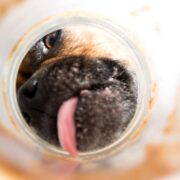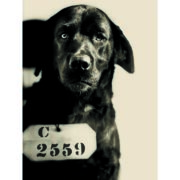Dogs and hardwood floors don’t always mesh. Some dogs are afraid of different surfaces, and it might not be so clear why. In particular, your pup may hesitate when it comes to walking on your hardwood floors if your dog’s paw pads have lack of traction.
You thought it would be the best flooring for you because it’s easy to clean and doesn’t collect fur and dander like carpeting does. However, now it’s turning out to be an issue.
Many dogs struggle to walk on hardwood floors either because they don’t have enough paw traction or simply because their ancestors never had to walk on them. Of course, shiny household floors didn’t exist before dogs were domesticated.
Here’s some more information on why your dog could be struggling with walking on your slippery floors and what to do about it.
Why Many Dogs Don’t Like Hardwood Floors
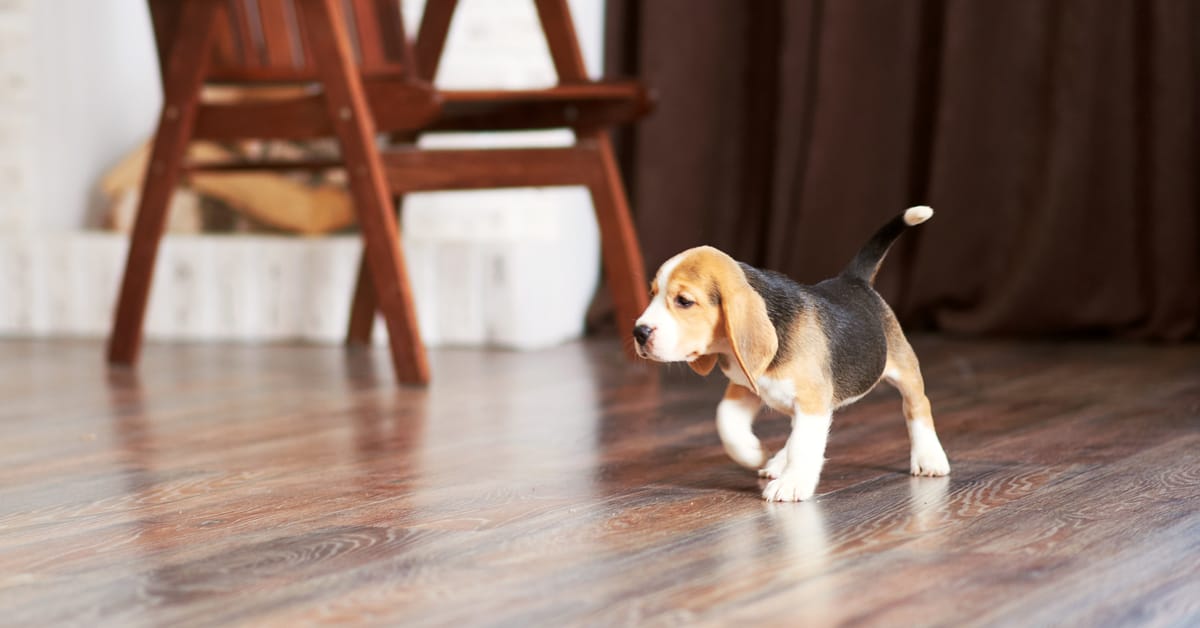
Dog owners may be baffled as to why their dog doesn’t want to walk on a hardwood floor. But the answer could be simple: perhaps he’s slipped on it in the past, and he’s afraid that it could happen again.
It may be cute to see your dog slipping and sliding on the floor, but it can cause some real issues. He could pull a muscle or tear a ligament, and if he’s an older dog with joint, spinal, hip problems, or arthritis, it could lead to permanent issues that will plague him for the rest of his life. And if he does something like tear his CCL, he’ll need pricey TPLO surgery.
Additionally, if your dog’s back legs twist, he looks like he’s doing splits (especially when he eats), or his feet are sliding out from under him, then you have an issue. It’s a real safety hazard, especially for senior dogs. A medical condition like hip dysplasia could be worsened if an old dog is rushed into walking on hardwood floors and slips.
This may be happening not only on hardwood flooring, but laminate flooring, vinyl flooring, bamboo flooring, tiles, and polished cement as well.
By taking a few steps, pet owners can reduce their furry friend’s chances of slipping and ensure he won’t be afraid of hardwood floors – or any types of floors – anymore.
Sanding and Refinishing Your Floors

Whether or not you have a new floor, an old hardwood floor, solid wooden floor, or engineered wood, there are ways you can keep your dog from slipping on it.
If you’re a homeowner, you could call a contractor to come out and give you suggestions on how to make your floors less slippery. They may suggest sanding and refinishing your hardwood flooring, for instance. This should happen once every few decades, so it could be time to do it.
Sanding and refinishing is ideal for solid wood that has a thick surface, including wood species like oak, maple, or walnut. Inquire with your contractor about Brazilian walnut, red oak, white oak, and hickory flooring to see if they can be sanded and refinished as well. Oak, maple, or walnut can be refinished a number of times and not suffer from any damage.
Ask your contractor what kind of polyurethane they’re going to use on your floor so that they don’t accidentally make it slippery. Polyurethane can protect your floor because it’s scratch-resistant, so it’s good to put on your floors if you’re a dog owner.
Aluminum oxide will also protect your floors and is non-slip. It is supposed to last 10-15 years longer than floors with polyurethane, too. Go over all the post-installation flooring options with your contractor and let them know about your dog’s slipping problems before deciding how exactly to refinish your floors.
Cleaning Your Floors
Debris and dust on your hardwood flooring can cause a floor of any kind to become slippery. It’s important to sweep and mop your floors frequently, especially in high-traffic areas like your living room or your entryway, to protect Fido and make these rooms more dog-friendly.
You may have to sweep your floors as much as once a day. If that’s not an option for you, look into a robotic vacuum like a Roomba for help. Keep in mind that some Roombas are best for hardwood flooring, while others can tackle both hardwood floors and carpeted floors.
Trim Your Dog’s Hair and Nails
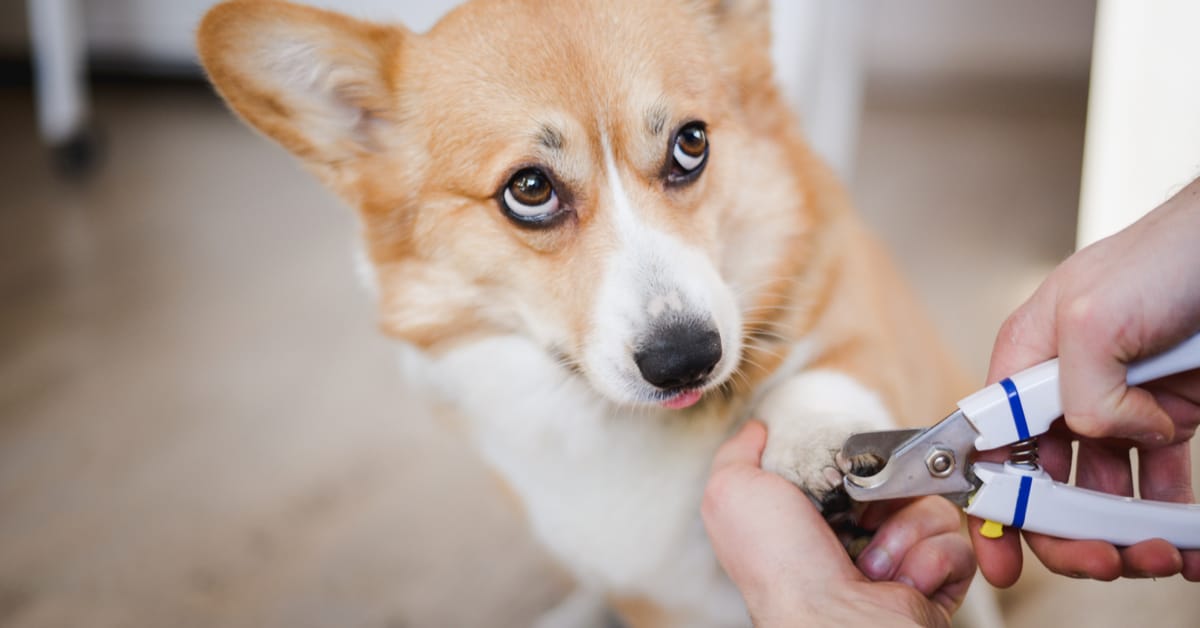
Whether you have a big dog or a small dog, you should keep the hair around his paws and claws nice and trim. Otherwise, it’ll be like he’s walking around the house with fuzzy socks on, which, of course, will cause him to slip.
Make sure you trim your dog’s toenails, too. You’ll know when it’s time to trim your dog’s nails if they have started to touch the ground. Long nails on your dog’s feet may sound like he’s tap-dancing on a hard floor or there’s a clacking noise all around the house.
There are plenty of videos online you can watch that show you how to properly trim your dog’s claws and hair, but if you don’t feel comfortable doing it, you can always take him to the groomer once you’ve noticed they’ve started getting too long.
Putting Booties on Your Dog
If your dog will tolerate it, you can put non-skid booties, toe grips, or traction socks on his paws so they can walk on slippery surfaces and tile floors with confidence. Some of the dog boots you can purchase will come with non-slip toe pads or rubber soles and hook and loop fastenings that are secure so that your dog can’t easily pull them off. If your dog won’t tolerate booties, grippers, or dog socks, paw wax or a paw balm like Musher’s Secret for cracked paw pads can help with adding traction on hard surfaces as well.
Placing Down Area Rugs
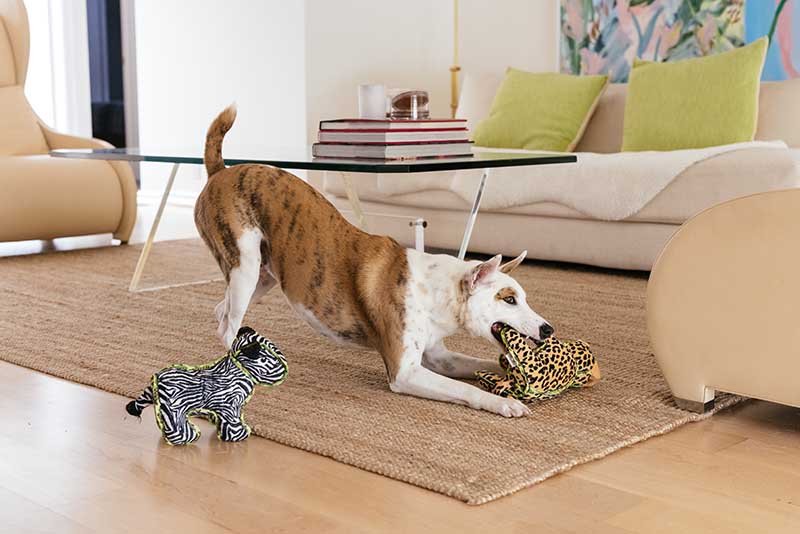
If you put area rugs, yoga mats, or carpet runners around your house on smooth surfaces, especially in high-traffic areas, then you can prevent your pup from slipping all over the place when your dog walks. When you get a rug, make sure you put an anti-slip rug pad under it so that your dog – and anyone in your house – doesn’t slip when walking on it.
Moving Your Dog’s Food and Water Bowls
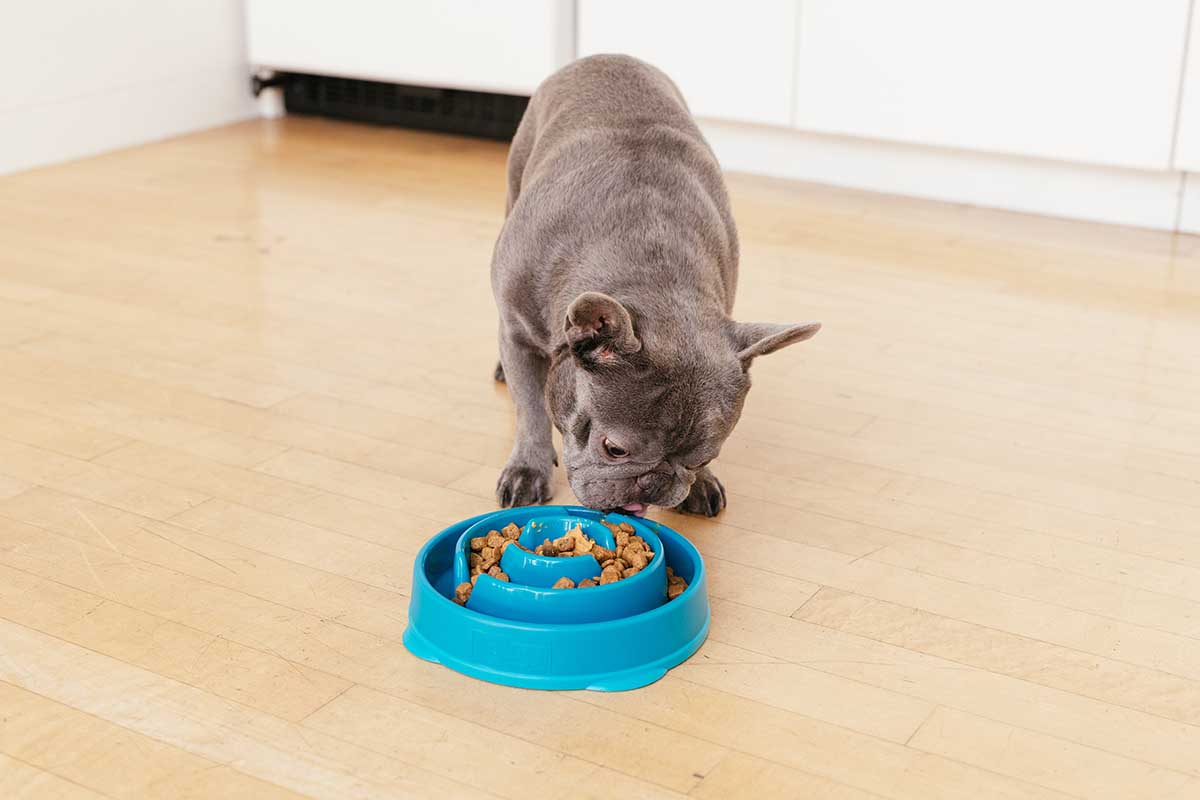
Does your furry friend knock over his water bowls a lot? If so, the water could spill onto the floor and cause him to slip. You could put a mat under his food and water bowls, and also put the bowls in a holder so he can’t spill them over on the slick floor.
Microfiber material is going to absorb the spills, while PVC or silicone will hold the spills so that you can wipe them up at a later time. When buying an absorbent mat, double-check that it will dry quickly so that mildew won’t grow on it.
Getting Your Dog to Walk on Hardwood Floors
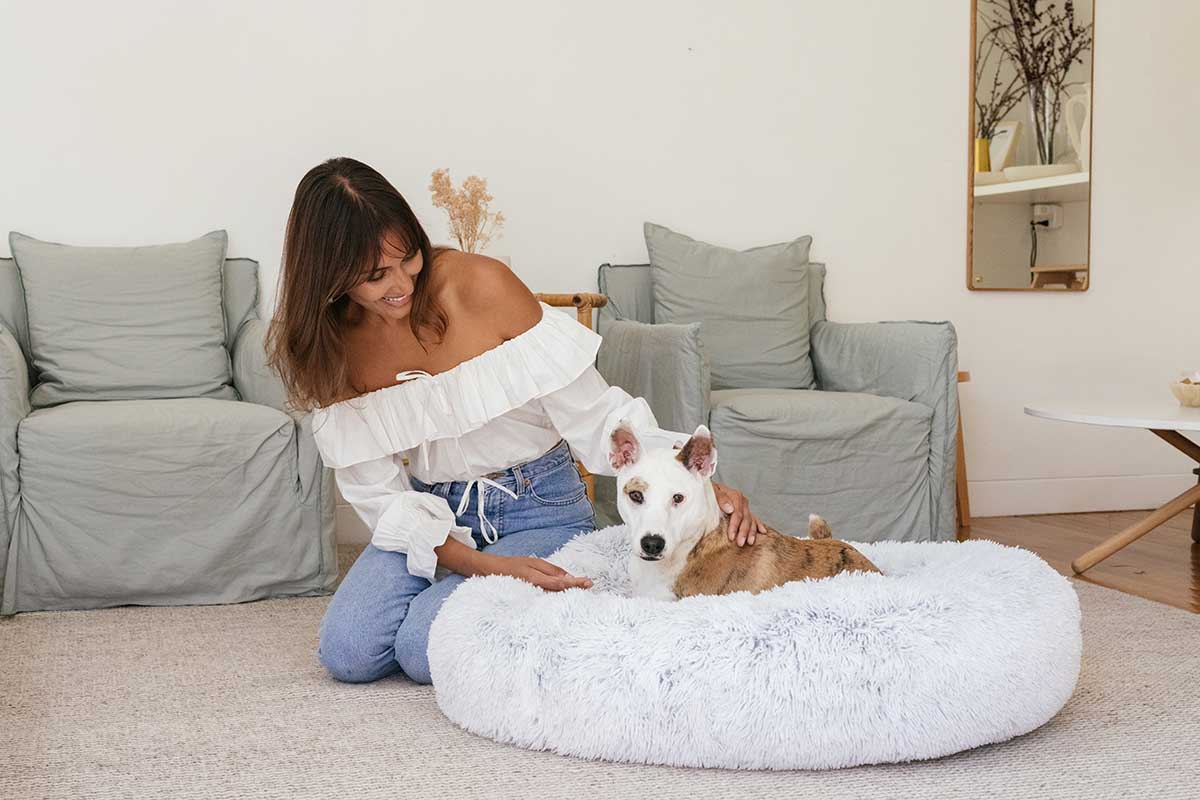
Let’s say you’ve taken preventative measures to stop your dog from slipping on slick surfaces, but he’s still afraid to go in certain rooms. You could always put some items he likes in those rooms to encourage him to go in there and show him they are now safe spaces.
For instance, you could put a calming donut dog bed from Best Friends by Sheri in the room. Your pup can curl up and feel nice and cozy, especially in those colder winter months. This bed offers head and neck support and has a very soft filling that provides muscle and joint pain relief.
Another option is to put your dog’s favorite toys in the room. He’ll likely fall in love with a cozy Sherpa Plush Toy Bone since he can both play with and snuggle it. It has two built-in squeakers for entertainment and stimulation as well.
You also don’t have to force it. Consider installing a baby gate to keep your pup away from rooms with slick flooring so they don’t end up hurting themselves.
Dogs and Hardwood Floors
As a dog owner, you’re dedicated to making your pup feel as happy and comfortable as possible. By investing the time into making your solid hardwood floors dog-proof so they can stand up and walk comfortably, you can guarantee that your pup is going to feel right at home and not be afraid anymore.
